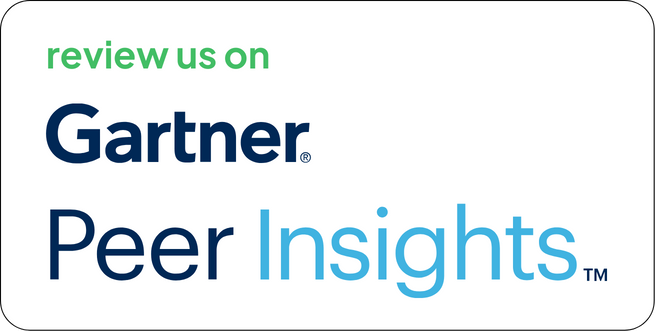Security scans expose risks, but finding isn’t fixing. What slows many teams down isn’t detection, it’s translating that detection into consistent, accountable remediation work. Azure Boards is where engineering and DevOps live. Strobes ensures that critical findings from your security stack land right there, structured, prioritized, and ready to be resolved.
Azure Boards Integration with Strobes bridges security discovery and DevOps execution. Here’s how it works, what it delivers, and why it matters for teams chasing measurable risk reduction.
What Is Azure Boards?
Azure Boards is Microsoft’s work tracking system for DevOps teams. It offers customizable workflows, agile tracking, team backlogs, and dashboards that help plan and monitor development tasks. Core features include:
- Kanban-style board views for sprint and workflow management
- Rich custom fields, tags, and workflows
- Tight integration with GitHub and Azure DevOps pipelines
- Scalable tracking for teams, features, bugs, and incidents
Security teams, however, often sit outside of this process, sharing spreadsheets, manually emailing findings, or using standalone ticketing systems disconnected from development velocity.
What Is Strobes?
Strobes is a CTEM (Continuous Threat Exposure Management) platform designed to operationalize vulnerability data. It consolidates, enriches, and automates actions across your security ecosystem, enabling a risk-based approach instead of just a scan-and-log process. With Strobes, you can:
- Aggregate findings from multiple scanners (Qualys, Burp, Snyk, etc.)
- Normalize and deduplicate results
- Prioritize based on exploitability, business context, and asset exposure
- Trigger workflows for remediation via tools like Azure Boards
- Track SLAs, progress, and fix validation across stakeholders
Why Integrate Azure Boards with Strobes?
This integration is ideal for security teams that want more than just visibility; they want execution. Security leaders often report:
- Manual handoffs between tools slow down MTTR (Mean Time To Remediate)
- Vulnerabilities lack ownership because they never become formal work items
- Developers prefer to work inside Azure Boards, not external systems
- Reporting is fragmented, and remediation status is difficult to track
Strobes fixes this by pushing validated, contextualized findings directly into Azure Boards with full metadata, auto-assignment, and traceability back to the original scan data.
What the Integration Actually Does
Once set up, here’s how the Strobes ↔ Azure Boards flow works:
1. Ingest, Normalize, and Contextualize
Findings from any Strobes-integrated scanner (e.g., Qualys, Veracode, Snyk) are ingested and transformed with added context:
- Vulnerability metadata (CVEs, severity, asset exposure, exploit availability)
- Business sensitivity and ownership tags
- Deduplication across overlapping findings
- Suppression of resolved or false-positive issues
This ensures only validated, actionable issues enter remediation queues.
2. Trigger-Based Work Item Creation
Once a finding meets defined automation rules (e.g., “Critical severity on production assets”), it’s automatically pushed to Azure Boards as a work item. The ticket includes:
- Title, description, CVE/QID details
- Risk score and priority
- Asset information and owner
- Suggested fix and validation steps
- SLA deadline (if configured)
Tickets can be categorized as Bugs, Tasks, or any custom type in your Boards setup.
3. Bi-Directional Context (Optional)
Work item status updates from Azure Boards (e.g., “Resolved”, “Closed”) can be synced back into Strobes, updating the finding status and closing the remediation loop.
4. Full Traceability
Every work item created through Strobes links directly back to the original finding, ensuring compliance traceability and developer clarity.
The Purpose of Azure Boards Integration with Strobes
Strobes Azure Boards integration exists to make security findings part of the DevOps backlog, not an external burden. It solves the delivery gap between detection and action.
Security teams benefit from:
- Reduced manual ticket creation
- SLAs and timelines tied to real business risks
- Visibility into remediation across teams and sprints
- Consistent audit trails for compliance
Developers benefit from:
- Seeing security work within their daily tools
- Actionable, clearly structured tasks
- Reduced back-and-forth with security teams
Why Azure Boards Integration with Strobes Matters?
1. Avoids Manual Ticket Creation
Security analysts no longer waste time writing Jira or Azure Boards tickets manually. With automation rules in Strobes, critical vulnerabilities generate structured work items instantly.
2. Ensures Consistency and Accountability
Tickets aren’t just sent, they’re assigned, timed, and tracked. Remediation accountability is built into the developer workflow with:
- Owner tagging based on asset group
- SLA countdowns
- Real-time dashboards
3. Removes Cross-Team Friction
No more “Did you get my email about that CVE?” Security and engineering share the same task system, with vulnerability tickets prioritized alongside technical debt, bugs, and features.
4. Enables Strategic Reporting
Strobes provides dashboards that map vulnerability statuses across all projects and Boards. From security to compliance to risk, reporting becomes unified:
- SLA breaches
- Aging tickets
- High-risk issues by business unit
- Top offenders by asset owner or app
What You Gain from Azure Boards Integration with Strobes
| Challenge | What This Integration Solves |
| Ticketing delays | Automated work item creation |
| Ownership confusion | Pre-mapped assignment rules |
| Missed SLAs | Built-in timers and dashboards |
| No developer engagement | Seamless delivery into Azure Boards |
| Fragmented tracking | Unified vulnerability lifecycle view |
| Audit bottlenecks | Linkage between scanner → ticket → remediation |
Who Uses Azure Boards Integration with Strobes?
- Mid to large enterprises using Azure DevOps
- DevSecOps teams needing closed-loop workflows
- Cloud-native businesses scanning frequently with tools like Qualys or Snyk
- GRC teams requiring structured, auditable processes
- Application security teams managing large volumes of findings
Final Thoughts
Scan results alone don’t reduce risk; remediation does. This integration moves you from reactive ticketing to proactive, risk-aligned remediation. If your security and engineering teams are misaligned or overwhelmed, this is a simple change with a measurable impact.
Want to see it in action? Get in Touch.





